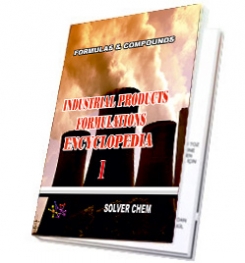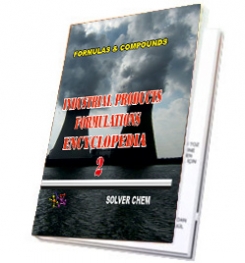The Basics
Diesel engines, just like many other lubricated machines, are susceptible to wear from silt particles in the 1-10 µm range. While in hydraulic systems and other components, optical particle counting has become the norm to determine levels of fluid cleanliness; particle counting is rarely performed on diesel engine oils since these oils are not transparent enough to transmit light because of high concentrations of soot particles.
In some cases, sample dilution can make it possible to run optical particle count analysis on dark oil samples, however, for diesel engine oils, such large dilution factors are required that the fraction of sample passing through the cell after dilution may not be representative of the neat sample (unmixed) and hence the data may be less than accurate.
However, by using proper solvent blends to achieve the required properties of solvency and viscosity, it is possible to get an isotropic sample with a convenient particle concentration to obtain a representative and natural size distribution and therefore, accurate particle count data using an optical particle counter. In this article, the procedure used to prepare diesel engine oils for optical particle counting is outlined.
Optical Particle Counting
In the field of used oil analysis, optical, automatic particle counters are the most widely used due to their high sensitivity and precision. Moreover, in the author’s experience, automatic particle oil analyzers are faster, more accurate and more reliable than any other method in determining fluid cleanliness levels.
One of the main limitations of this method is that the particle counter’s upper limit is typically around 20,000 particles per milliliter. Used engine oils normally contain higher concentrations than this, requiring heavy dilution. If not performed properly, this dilution can adversely affect the accuracy of this method. Similarly, because optical particle counting relies on either light blockage or light scattering, the results can be affected by the color of the fluid, particularly very dark samples such as used diesel engine oils.
Pore Block Particle Counters
Pore block particle counters work by correlating the number of particles passing through a filter membrane, with the resultant increase in either the differential pressure across the membrane or the flow decay through the membrane. This approach has an advantage in that air bubbles and water droplets are not detected. In addition, because the measurement does not depend on the color of the fluid, it is possible to perform particle count analysis on diesel engine oils and other dark fluids using pore block particle counters.
The biggest drawback with pore block particle counters is that because the membrane pore size is fixed (typically 10 µm) for a particular measurement, determining the particle size distribution in multiple size ranges, as per ISO 4406-99 requires an interpolation of the data based on the pressure drop or flow decay characteristics. This results in a fairly narrow dynamic range of sensitivity, and potential inaccuracy in correctly determining particle concentrations in different size ranges. This is illustrated in Table 1.
Optical Particle Counting on Dark Fluids
In order to allow the use of the more accurate optical particle count method on used diesel engine oils and other dark oil samples, Ingelube S.A. has developed a special sample preparation procedure that allows for appropriate dilution of the sample, without affecting the integrity of the data.
The technique relies on diluting the sample with a blend of high viscosity white oils, chosen to maintain the sample oil viscosity, adjusted with aliphatic organic solvents, such as hexane and cyclohexane to maintain the same solvency, keeping soot and other particles in suspension in the sample. The key success factor was to find a solvent mix that allows dilution of the particle concentration without affecting the viscosity or solvency of the sample.
The degree of dilution used is dependent on the number of particles contained in the sample. Successive dilutions can be made to ensure a measured concentration in the diluted sample of less than the 20,000 particles per ml sensitivity of the particle counter. The actual particle concentration of the sample can then be back calculated based on the dilution factors used.
After dilution, particle counts were made using a standard laser particle counter. By correlating the result obtained from many different diesel engine oil samples with data from other tests, Ingelube was able to relate increases in the concentration of particles in different size ranges with certain problem conditions.
The results of Ingelube’s work shows that automatic laser particle counters can be used in the analysis of diesel engine oils. The benefit of incorporating this technique, as discussed in the introduction, is that automatic particle counters are faster, more accurate and more reliable, compared to alternate methods such as pore block particle counting.

any engine oil
LUBRICATING OIL
FORMULATIONS
ENCYCLOPEDİA
is enough.
LUBRICATING OIL FORMULATION ENCYCLOPEDIA has many formulations of greases, complex grease, lithium grease production,sodium greases formula, formulation,multigrade engine oils manufacturing process,motor oils making, gear oil production, synthetic engine oils,semi synthetic motor oils,gasoline oils,diesel oils production process,composition of turbine oils,transmission oil manufacturing, production of cycle motor engine, tractor oils,mineral based motor engine production,heat transfer oils, slideway oils formulation, formulations, cutting oils formula,formulas grinding oils,mould oils manufacturing process and etc.
All lubricating oils in the encyclopedia are producible easily.You need no help and no technıcal support. The encyclopedia is enough to produce lubricating oils and engine oils itself.
LUBRICATING OIL
FORMULATIONS
ENCYCLOPEDIA
is written clear and understandable.


HARD BOOK E BOOK
RELATED TAGS: What is engine oils,making synthetic diesel engine oil,semi synthetic engine oil manufacturing process,mineral based engine oil production, heavy duty engine oil formulation,high performance engine oil formula,formulas,properties of motor oils,synthetic motor oil msds, analysis,composition of engine oils,additives of motor oils, mineral engine oil formulation,make semi synthetic diesel engine oil, base oils,synthetic base oils,light neutral oil,heavy neutral oil,performance additives package, properties of diesel engine oil, how to formulate engine oils, types of engine oils, synthetic motor oils,ingredients of engine oils,compounds of engine oils, index of motor oil,characteristic of motor oils,application of motor oils,combination of synthetic engine oils.
SOLVERCHEM PUBLICATIONS

|
|

|
|

|
|
